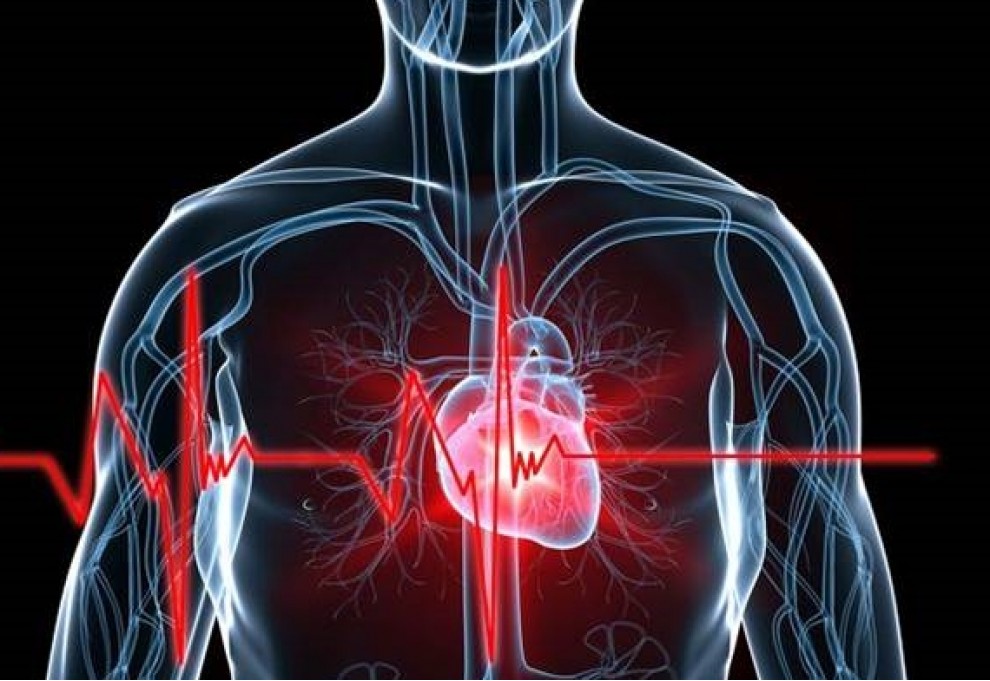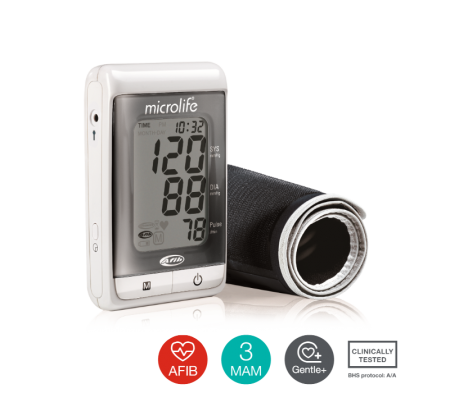The number of cases of Atrial fibrillation (AFib) continues to rise which elderly, men and high blood pressure people are the high-risk groups. Patients are at five times more likely to suffer a stroke than other people, but many patients do not know they have such "silent killer" on their body until they suffer from other serious reasons including stroke.
Since many patients with AFib suffer from hypertension at the same time, and hypertension patients must regularly measure their blood pressure, a new generation of simple test methods has recently been introduced in Hong Kong for early detection of Arial fibrillation. This enables the patients to have early treatment in order to reduce the risk of stroke.
Most AF cases with no symptoms which increased stroke risk
David Siu Chung-wah, a cardiology professor of the University of Hong Kong, said Atrial fibrillation is a type of arrhythmia and the heartbeat of patients can go up to 100 to 175 per minute. This disease affects about 1 percent of the local population that is around 55,000 to 70,000 people in Hong Kong. The figure shows about 10-20 percent of the patients do not show any symptoms[1], but Professor Siu said the figure could be higher.
In the case of Atrial Fibrillation, This can cause blood to accumulate in the atria of the heart, clump together, and form blood clots. These blood clots can then migrate through the bloodstream to the brain, where they block the blood vessels and this causes a stroke.[2]
Patients with atrial fibrillation are five times more likely to suffer from an often more life-threatening stroke, he said. The heart chambers beat chaotically and irregularly and form blood clot.[4],Therefore, early diagnosis and treatment should be given to reduce the risk of stroke. In addition, there are also studies suggesting that 20% of stroke cases are caused by atrial fibrillation. In cases of stroke with different causes, the 'seriousness' of stroke due to atrial fibrillation is higher.[5]
New technology for blood pressure devices to detect AFib
To detect patients with dangerous and invisible Atrial fibrillation, Hong Kong recently introduced a new technology for detecting atrial fibrillation during blood pressure measurements. 'There are many hypertensive patients in Hong Kong. If we can measure blood pressure and detect atrial fibrillation on a daily basis, more patients will be diagnosed.' Professor Siu said.
A study by Hong Kong University shows that certain new blood pressure monitors can accurately identify AFib, bringing early diagnosis.
Between September 2014 and January 2015, the university tested the oscillometric blood pressure monitor and handheld-smartphone-based heart monitor on 2,052 patients of the Hospital Authority's Hong Kong East Cluster, among them 24 were confirmed with atrial fibrillation. Michael Chan Pak-hei, a clinical assistant professor who took part in the study, said the oscillometric blood pressure monitor is 83 percent accurate while the other monitor is 67 percent.[6]
A woman with stomachache admitted to hospital and diagnosed as heart disease
'I had to walk slowly and I could not work.' said Ms Cheung, 59, a saleswoman. She was first diagnosed suffering from atrial fibrillation when she was still a teenager but she did not pay much attention it.
Until the beginning of last year, Ms. Cheung sought medical treatment for her continuous discomfort with a racing heartbeat. Her doctor pointed out that her blood pressure was too low and her heartbeat was too rapid, advice her to go to the hospital for checking immediately. After checking, the doctor said there is a problem with her heart.
Then she consulted a heart specialist who confirmed that she has Atrial fibrillation after diagnosis. At the moment, Ms. Cheung takes medication for Atrial fibrillation and need to control her blood pressure. She is in a stable condition and needs regular follow-up.
Professor Siu said Ms. Cheung was one of the lucky ones as many patients do not know they have the condition until they suffer from serious complications such as stroke.
Reference:
1. Richard L. Page, Thomas W. Tilsch, Stuart J. Connolly, Daniel J. Schnell, Stephen R. Marcello, William E. Wilkinson and Edward L.C. Pritchett. Asymptomatic or 'Silent' Atrial Fibrillation : Frequency in Untreated Patients and Patients Receiving Azimilide. Circulation. 2003;107:1141-1145
2. National Heart, Lung, and Blood Institute website. Health-topics. Af/signs
3. American Heart Association, Inc. Why-Atrial-Fibrillation-AF-or-AFib-Matters
4. Wolf PA, Abbott RD, Kannel WB. Atrial fibrillation as an independent risk factor for stroke: the Framingham Study. Stroke et al, 1991; 22:983-988
5. AF Association. MT1786 EXE SUM ENG WEB 01.pdf
6. Pak-Hei Chan, Chun-Ka Wong, Louise Pun, Yu-Fai Wong, Michelle Man-Ying Wong, Daniel Wai-Sing Chu, Chung-WahSiu. Head-to-Head Comparison of the AliveCor Heart Monitor and MicrolifeWatchBP Office AFIB for Atrial Fribrillation Screening in a Primary Care Setting. Circulation2017
7. NICE medical technology guidance 13
8. Heart patients warned of risks from silent killer[N]. The Standard, 27 Feb 2017



